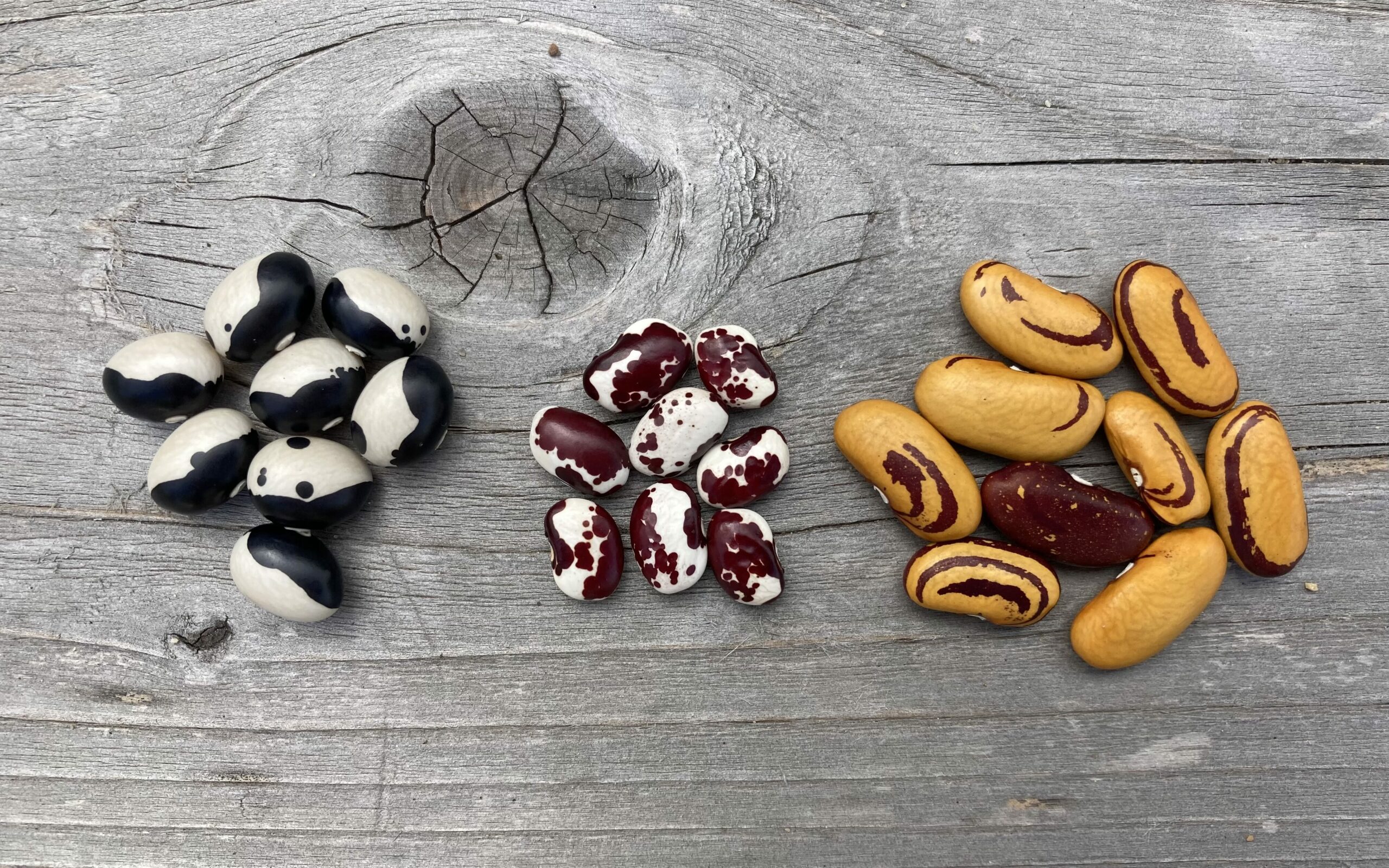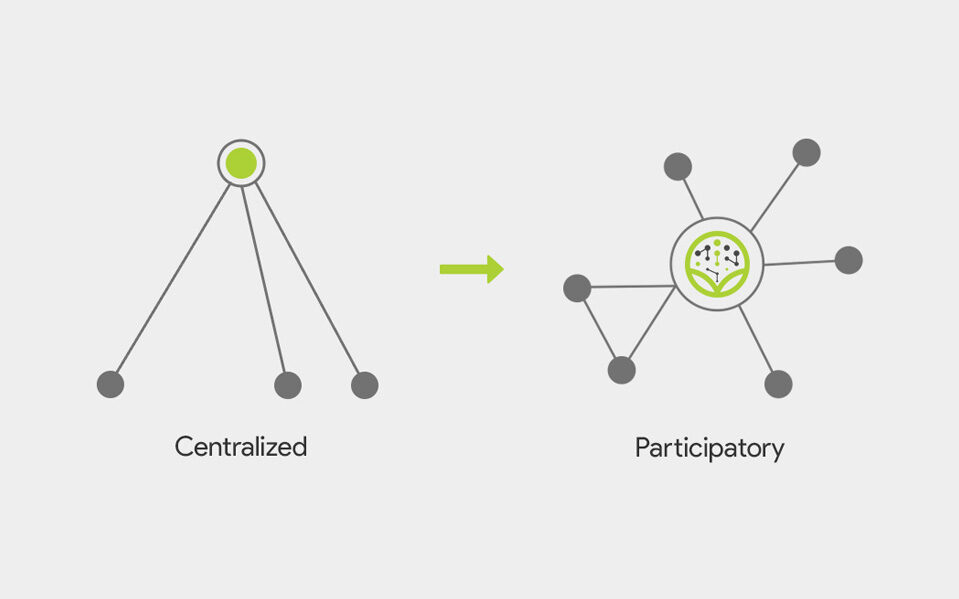

The Science Behind SeedLinked
The Science Behind Collaborative Variety Trialing
The SeedLinked trialing model is based on the work of our scientific advisor, Dr. Jacob van Etten. While most breeding and trialing programs still rely on a centralized model with one to three locations, that fundamentally limits the potential of recommendation engines and genomic prediction models because they are based only on the specific conditions (genotype x environment x management or GEM) captured at those centralized research stations. Ultimately, this results in the “suboptimal development and deployment of crop varieties” because growers will only rarely benefit from truly local adaptation ( 1 ) (i.e. if they farm in the same environment as the research stations).
If we want to be fully responsive to changing consumer preferences and influences of a changing climate, we need a model that can fully address not only genotype, environment, and management interactions ( 2, 3, 4 ), but also preference ( 5 ). We need to shift away from the paradigm of broad adaptation and fewer crops/varieties that has been driven by the largest seed companies seeking ever-larger economies of scale.
The key to addressing the challenges ahead for our food system is to involve the growers and consumers themselves, to capture preference and accumulated knowledge of local adaptation ( 1, 6, 7 ). Such participatory models (like our collaborative variety trialing) can outperform traditional breeding models ( 8 ), can quickly and effectively model crop bioregions to prescribe the right variety for a grower’s conditions ( 9 ), and are more affordable ( 5 ) – especially when carried out with technology such as SeedLinked’s Collaborative Variety Trialing Software.
When compared with traditional experiments at centralized research stations, SeedLinked trials simply offer more bang for the buck. Our data is:
- highly discriminative (e.g. our 2022 Slicer Tomato Trial);
- accurate (e.g. comparing crowdsourcing vs RCBD in 2019);
- more predictive of on-farm and year-over-year performance (e.g. comparing year-over-year results).
Perhaps most important for meeting the needs of small growers and rapidly changing climates, our breeding and trialing model is more affordable.
SeedLinked represents the next paradigm of breeding and trialing, where you can accomplish more with less investment.

Why is a decentralized approach important?
One could argue that the data revolution in agriculture has changed everything, but specialty crops like fruits and vegetables have largely been forgotten. When such crops do receive attention, it’s usually focused on the largest mega-growers. Ironically, it’s actually 500M smallholder farmers in a staggering diversity of production environments that provide 80% of the world’s food. Even in the US, 85% of farms are small-medium in scale. Yet the focus of most seed breeders and input manufacturers is concentrated on the largest growers, a handful of crops, and a few ‘key’ production regions. As a result, the majority of the product development cycle is carried out at just a few research stations.
So how can such a centralized model fully serve such a range of growers and environments? The short answer is “not very well.”

A recent editorial published in Nature ( 10 ) noted that 95% of published agricultural studies they assessed were not relevant to smallholder farmers. As our scientific advisor noted in another recent paper ( 11 ) regarding plant breeding specifically, “genomic prediction may be used to predict the performance of untested new genotypes but is bound to the Genotype x Environment x Management (GEM) interactions captured by the research stations that are used to train the selection models.” Ultimately, sub-optimal solutions are brought to market because the solutions were never developed in a setting that would allow them to be tailored to the needs of diverse growers.
We believe that most of the value creation in agriculture in the coming decades will be from the formalization of currently informal supply and value chains in developing agricultural economies. Think of the explosive growth in the value of the coffee supply chain when transparency and identity-preserved products started to become popularized.
As technology brings transparency and access to growers around both inputs and end markets, current firms need to make hard decisions about whether they will change their systems to meet this new decentralized reality, or whether they will stay focused on a centralized model.
We believe the future is decentralization and democratization to bring resiliency for all.
Resources
- Ceccarelli S, Grando S. 2007. Decentralized-participatory plant breeding: an example of demand driven research. Euphytica. 155: 349-360.
- Eshed Y, Lippman ZB. 2019. Revolutions in agriculture chart a course for targeted breeding of old and new crops. Science. 366(6466).
- Tester M, Langridge P. 2010. Breeding Technologies to Increase Crop Production in a Changing World. Science. 327(5967): 818-822.
- Acevedo M et al. 2020. A scoping review of adoption of climate-resilient crops by small-scale producers in low- and middle-income countries. Nature Plants. 6(1231-1241).
- van Etten et al. 2016. First experiences with a novel farmer citizen science approach: crowdsourcing participatory variety selection through on-farm triadic comparisons of technologies (TRICOT). Experimental Agriculture. 55(S1): 275-296.
- Rhoades RE, Booth RH. 1982. Farmer-back-to-farmer: A model for generating acceptable agricultural technology. Agricultural Administration. 11(2): 127-137.
- Fadda C et al. 2020. Integrating Conventional and Participatory Crop Improvement for Smallholder Agriculture Using the Seeds for Needs Approach: A Review. Frontiers in Plant Science. https://doi.org/10.3389/fpls.2020.559515
- Annicchiarico P et al. 2019. Farmer-participatory vs. conventional market-oriented breeding of inbred crops using phenotypic and genome-enabled approaches: A pea case study. Field Crops Research. 232:30-39.
- van Etten J et al. 2019. Crop variety management for climate adaptation supported by citizen science. Agricultural Sciences. 116(10): 4194-4199.
- Editorial. 2020. To end hunger, science must change its focus. Nature. 586: 336.
- de Sousa K et al. 2021. Data-driven decentralized breeding increases prediction accuracy in a challenging crop production environment. Communications Biology. 4:944.